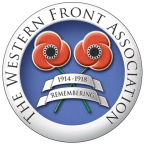5th Training Squadron, Australian Flying Corps

The 28 August 1918 was a black day for Minchinhampton Aerodrome, as three of its pilots were killed in one accident.
Roy Lytton Cummings was born in Sydney in 1894, the son of Dr Harold L and Marcia Cummings. At the time he enlisted he lived at Franklin, Tasmania and latterly they lived at Dunesbin, Thurroul, New South Wales. Roy was educated at Queen’s College, Hobart, Tasmania and at time of enlistment was living in Franklin, as an ‘orchardist’.
Attestation for military service was made at Claremont, Tasmania on 18 August 1914 and he was mobilised on 19 November, as a private (number 5561) in No 3 Field Ambulance (10th Reinforcement). He left Australia on 8 September 1915, aboard the HMAT Ballarat (A70) and arrived in Gallipoli on 21 October 1915, joining the strength of the No 3 Field Ambulance at Anzac
on 3 November.
He remained at Gallipoli until 14 December, when he left for Mudros and then sailed aboard the HS Beltania for Alexandria, arriving on 25 December.
He remained in Egypt with No 3 Field Ambulance in Egypt until 10 June 1916, at which point the unit left to join the British Expeditionary Force in France, arriving at Marseilles on 16 June. On 7 August he was re-mustered as a Driver, with 1 Motor Transport Base depot at Rouen and joined 4 Division Ammunition Sub Park on 10th of that month.
In September 1917 he applied to join the Australian Flying Corps (AFC), was accepted and added to their strength, as an Air Mechanic Second Class, on 4 October, at the Army Flying Corps Depot, Halton Camp near Wendover, Buckinghamshire. On 23 January 1918 he became a Cadet and undertook a course in Elementary Aviation at Shawbury, Shropshire. He graduated as a Flying Officer (Pilot), with rank of Second Lieutenant on 23 March.
A posting to 5th Training Squadron, Minchinhampton Aerodrome (later named Aston Down) on 14 April. Here he undertook a variety of flying courses, including one at the Special Flying School, Gosport. According to the CO of 5th Training Squadron, he quickly displayed an impressive flair for flying and he wrote to Roy’s father ‘he came to me as a pupil and did so well I made him an instructor’. His appointment to Instructor came on 27 May.
On 28 August 1918, at 7.25am Second Lieutenant Cummings was in the air in an Avro 504K (serial no D9282) giving instruction to Lieutenant Charles William Scott. The weather was fair and visibility good. Also in the air, flying solo in an Avro 504, was Corporal Cadet Ernest Howard Jefferys, of 6th Training Squadron, who had been ordered to put in 30 minutes practice in vertical turns over the airfield. At a height of between 1000-1500 feet the two aircraft were flying at right angles to one another, Jefferys heading north east and Cummings and Scott south east.
Jeffreys aircraft turned left and its right wing collided with the right wing of the other machine and both aircraft fell to earth killing all occupants instantly.
Roy Cummings had sustained a fractured skull, a fractured right femur and internal injuries. An inquest concluded it was accidental death in all cases.
Second Lieutenant Roy Cummings was aged 24 and was buried at the same time and alongside the other two unfortunate victims of the collision, in Leighterton Church Cemetery, with military honours on 31 August 1918. A CWGC headstone now marks his grave. He had two brothers who served with Distinction in the Great War, Lieutenant M H Cummings MM and Captain E D Cummings DFC AFC. Both appear to have survived the war.

Avro 504 at the Shuttleworth Collection

Research by Graham Adams 16 January 2018 with acknowledgement to the AIF Project for some information)
